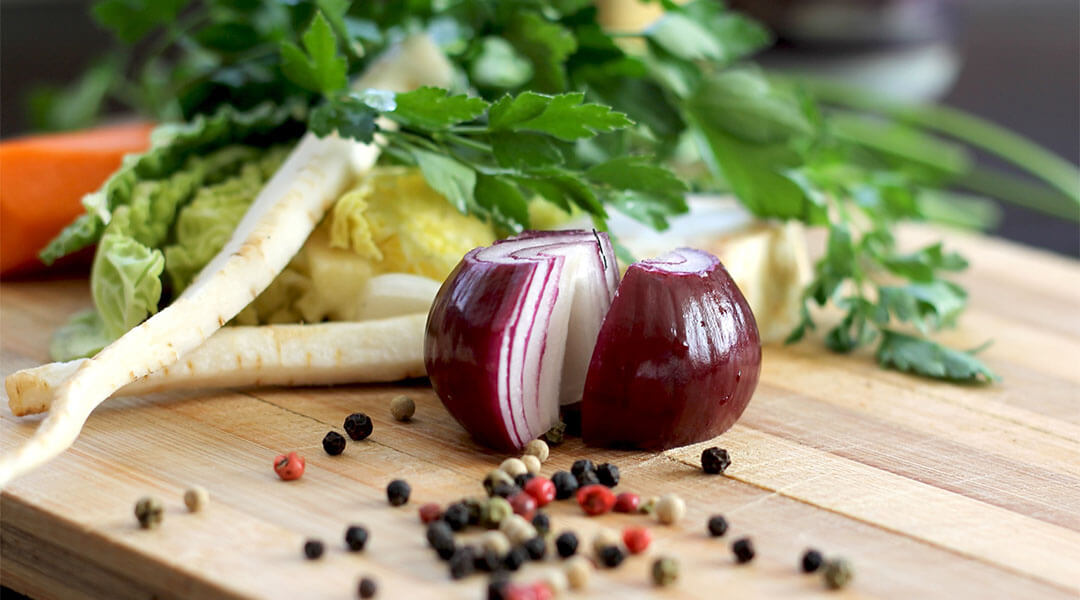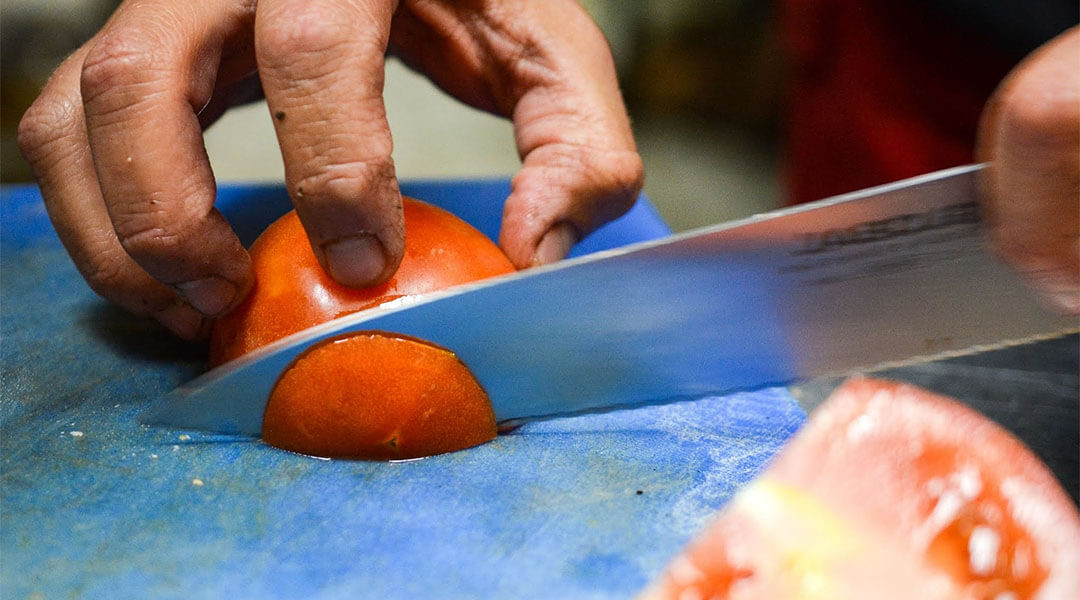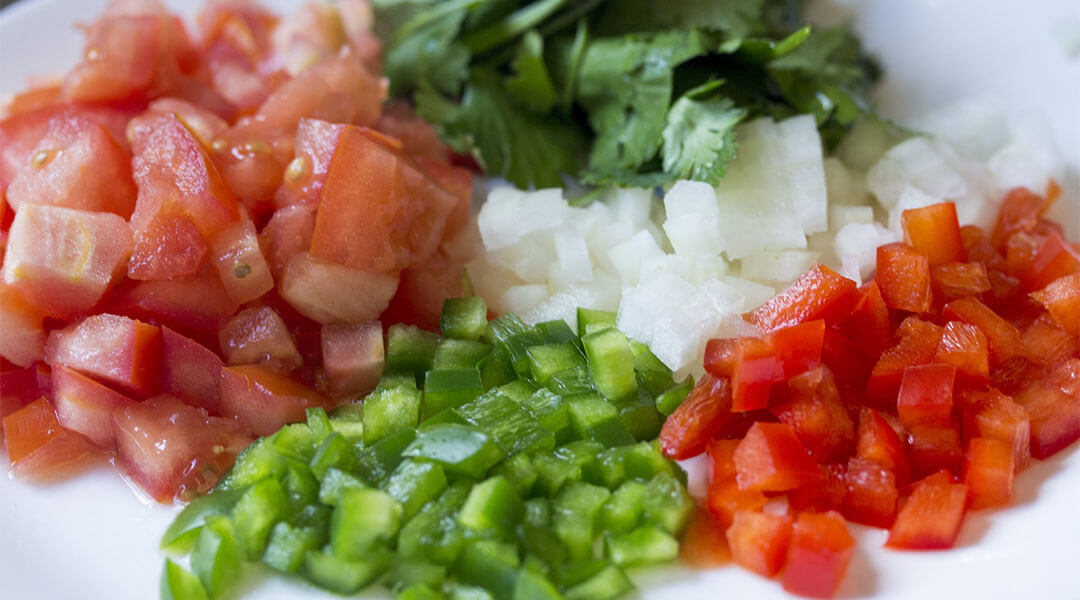If you are an aspiring chef or a homebred culinary wonder who loves to learn new tricks, the very basic thing you should be familiar with is cutting and chopping kitchen ingredients. There are various vegetable cutting techniques and types of cuts that we unknowingly come across a lot in our kitchens.
Toggle for Table of Contents
Importance of Cuts

In professional kitchens, the size of your dices and fruit and vegetable cuts could cost you your job. Properly cut ingredients pave the way for properly cooked food. The greatest chefs say that even before a person eats food through their mouth, they eat it through their eyes.
The different types of cutting vegetables exist because of their aesthetic and visual appeals that are deemed highly crucial as far as expert presentation is concerned. This is where this article steps in to help you gain mastery over the basic cuts and techniques so that your cutting becomes much more accurate, precise and fast.
Find Knife That Suits You

All cuts start with a knife and a good knife not only can let you work efficiently while cutting but also let you make cutting more enjoyable and less stressful. But before buying a knife, there are a few qualities of the knife you need to know:
- The quality of the blade is made of what steel or alternative materials.
- The method that was used to make the blade, for example, stamped, roll forged, drop forged, hand forged and hand hammered
- The sharpness and the longevity of the edge of the blades
- The balance and feel of the handle of the knife
- The quality of handle and quality of manufacturing
- If you are work a lot with raw food a lot like making sushi, the knife uses for sushi can be quite different from your regular kitchen knife
Toggle for Related Popular Posts
Some Useful Tricks up Your Sleeve
Before we go ahead with the types of vegetable cuts in detail, one should make sure that they are acquainted well enough with a few valuable tips about cutting up vegetables and fruits.
- Always make sure that you are using the right knife for the culinary job at hand. Here are the 5 best Japanese Knives you should know about.
- Whenever cutting vegetables or any kitchen item, make sure to have a sturdy base
- While cutting different vegetables, always tuck your fingers below your knuckles in order to protect them
- Your fingertips should be guiding your knife along the food items that you cut
- Make sure to hold the knife properly for better cuts. Learn the basics of holding knives while cutting here.
- The foundation of any type of vegetable cut is a perfect square pieced vegetable. Removing the tail and top followed by peeling and flattening all sides of a vegetable is the very first step to acquiring the different types of cuts
Sharing is Caring

Like what you read so far? How about help us to spread this AWESOME post to your friend and family? Your shout-out will help to motivate us to create more great posts for you and everyone else. Thanks for your support!
Check out this post for 'The 5 Different Types of Cuts Every Chef Must Know.'
The Various Types of Cuts

1. The Julienne Cut
The Julienne is the most common type of cut which features thin and long slices of vegetables and fruits. It is also sometimes called the Allumette or the matchstick cut. The Julienne cut is the starting point for various other cuts like Brunoise, small dices, etc.
The Juliennes should precisely measure 1/6th or 1/8th of an inch and this cut is commonly used for carrots, celery, onions and other hard vegetables so that they take lesser time to cook and look beautiful at the same time.
2. The Brunoise Cut
The Brunoise cut also called the Brunoise dice is the smallest size of diced vegetables and fruits. The veggies are cut into small cubes of precisely same measurements and the cutting technique is applied to vegetables like potatoes, tomatoes, turnips and carrots.
It is a French cooking style which has the Julienne as the first step, sticks of which are finally sliced to render cubes as small as 1.5 to 3mm. The visual effect created by this particular cut is surprisingly phenomenal and requires years of practice to acquire perfection and is commonly carried for usage in soups and stews.
3. The Batonnet Cut
The Batonnet is similar to squaring and julienne except that it is bigger and broader. The pieces of vegetables and fruits obtained by cutting them Batonnet style are rectangular in shape and look like thick sticks. This cutting style is used for preparing vegetables to be served as sides and to add another level to the presentation.
Potatoes, carrots, fennel and other such similar food items are cut in this manner commonly. The dimensions of the Batonnet slices measure 1/4" X 1/4” X 2”. These sticks so obtained are further used for delivering the Baton cut and medium diced vegetables. This cut is very similar to another classic cut called the Jardinière Cut.
4. The Paysanne Cut
The Paysanne cut is based thinly on the various cube and dicing cuts. The cubes and batons of vegetables can be made slimmer and flatter with the help of this cut. Chunkier and smaller, thinner pieces are rendered to produce thin squares, triangles, and circles.
The Paysanne, therefore, is not a cube but a thin slice. It is commonly used when the food ingredient is needed to be cooked quickly in order to release ample flavor and juices. The Paysanne slices are generally 1 to 2mm thick and the cutting technique is often used in Mirepoix, sauces, and stocks where vegetables need to be sautéed.
5. The Chiffonade Cut
The Chiffonade cutting technique is popularly used in culinary kitchens for chopping up and shredding herbs and leafy vegetables. Spinach, lettuce, basil, mint, and other herbs like thyme etc. are cut using the Chiffonade technique.
The Chiffonade cut renders thin strips of leaves of length 1mm to 1 inch by stacking the leaves on top of one another like a pile and then rolling them up firmly. This tubular role of leaves is then cut to produce very fine ribbons of herbs and leaves which are perfect for garnishing and presentation.
Crushing is another technique wherein the blade of a sturdy knife is used to carefully crush ingredients like garlic and ginger. There are a few more common types of cuts like mincing, roll cutting, slicing, etc. which can be easily learned about here. The videos of various cutting techniques will help you practice all these types of cuts with finesse.
Final Cut
Hope this article on the different types of cuts of vegetables and fruits was useful for you and will be able to help improve your cooking presentation. Do keep visiting us for more such kitchen lessons and tricks.
The post The 5 Different Types of Cuts Every Chef Must Know appeared first on Gordan Ladd's Kitchen.
No comments:
Post a Comment